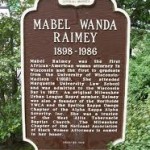
On July 1, 2011, without much fanfare in the rest of the world, Germany ended its military draft. The German military draft began in 1956 (when Cold War concerns led to its re-establishment in West Germany) and lasted for 51 years.
For American males who turned 18 between 1946 and 1972 (several of whom currently serve on the Marquette law faculty) the German action is a reminder of the powerful role that the “peace-time” military draft once played in the United States.
Because it has now been almost 40 years since the American military draft was terminated, many of the details of the draft have passed out of the American consciousness and are only hazily remembered even by those who lived through the period of the draft. (Does anyone ever watch the 1969 Arthur Penn film Alice’s Restaurant, which revolves around a satirical treatment of what the draft did to the lives of young American males in the Age of Aquarius?)
The following is a summary of the way in which the U.S. military draft operated in the late 1960’s and early 1970’s, and how it affected the lives of those planning to attend college or graduate school. This surveys the operation of the draft from the time of the Military Selective Service Act of 1967—which significantly revamped involuntary military service in the United States—until the termination of the draft in 1972. The discussion below is part personal memoir and part research project.
One of the central features of the Cold War draft was the student deferment. As long as an eligible male was enrolled in an undergraduate college, his eligibility for the draft was deferred until his studies were complete or else he had left college. Until 1967, students who were in graduate school were deferred as well, although one of the purposes of the 1967 Act was to reduce dramatically the number of graduate programs eligible for student deferments.
Consequently, males who entered college after 1967 knew that once they had finished college—unless they enrolled in Divinity School–they would have to deal with the prospect of mandatory military service. Although many eligible men were in fact never drafted, the escalating use of ground troops in Vietnam in the late 1960’s made it seem likely that most physically fit males would have to either submit to induction into the military, or else volunteer for some branch of the service before being drafted, or establish that one was a qualified religious conscientious objector (which normally required proof of membership in a “peace church” like the Society of Friends, the Mennonites, or the Church of the Brethren”). The only alternatives were going to prison or leaving the country.
As a symbol of this system, all 18-year old or older males were required to carry a “draft card” that both indicated one’s draft status and doubled as a general purpose ID card.
The Military Selective Service Act of 1967, passed at the highpoint of the escalation of U.S. military involvement in Vietnam, had significantly altered the system of drafting civilians that had been in place since the years before World War II. While it reduced the number and type of exemptions, it left the undergraduate college deferment in place, and it originally left the process of selecting draftees to local draft boards. Previously, every local draft board was assigned a “quota” for soldiers that it had to supply to the U.S. military. Although the quotas had to be met, except in cases of extraordinary special circumstances, the boards were normally given broad discretion when it came to choosing who would be drafted and who would not.
Although draft boards were frequently accused of favoritism in their choice of draftees, cultural icons Elvis Presley and Willie Mays were both drafted in the 1950’s, after they had become nationally well-known figures.
However, on November 26, 1969, President Richard Nixon, still in his first year in office, signed an amendment to the 1967 act which replaced the arguably arbitrary local selection system with a national draft lottery.
Under the lottery, a draft number was randomly assigned to each day of the year, and in the year they turned 19, young men were subject to call up to the military the following year. Call ups began with those whose birthdays had assigned the lowest numbers. (The assignment of numbers was done through the use of a lottery bin and the event was shown on national television.)
Student deferments for those attending college remained in place, but they only delayed, and only for up to four years, the year the holder became eligible to be drafted.
The first draft lottery was held on December 1, 1969, and applied only to all males eligible to be drafted under the previous system—which were those men born between January 1, 1944, and December 31, 1950. (Anyone born before 1944 had already reached age 26, which was the oldest age at which a man could be drafted under the previous system.) The 1969 Amendment also provided that if an eligible male was not drafted the first year that he was available for the draft, he could not be drafted in a subsequent year.
This formed the primary basis of the argument that the new lottery was less disruptive to the lives of young men because it reduced the period of uncertainty as to whether or not one would be drafted from seven years (ages 19 to 26) to a single year (the year one turned 19). While this was technically true, those who held student deferments had to worry about their draft status all the way thorough college and for the following year.
In 1970, it was generally assumed that the need for troops might require the federal government to go as high as #215 in the draft, but was unlikely to go any higher. Consequently, anyone with a number above #215 could decline to apply for a deferment and take the very small risk of being drafted. For those with #366, there was absolutely no risk at all, short of the outbreak of a major war with the Soviet Union. Those with low numbers could be certain that they would be drafted when or if they lost their student deferment.
The second drawing, affecting those born in 1951, was held on July 1, 1970, after the conclusion of the freshman year of college of most of that group that had enrolled in college. However, most of the students who began college in the fall of 1970, were, like myself, born in 1952. We were eligible for student deferments, but had to wait until the following summer to know our real draft status.
By 1970, the future status of the draft was a matter of much debate and significant uncertainty. Richard Nixon had called for a phase-out of the draft during the 1968 presidential campaign, and there were frequent rumors throughout his first term that the ever increasing troop withdrawals from Southeast Asia were a prerequisite to the draft’s abolition. Consequently, one could always hope that the draft might be abolished while one’s student deferments were still in effect.
On the other hand, there were also persistent rumors that Congress might end student deferments—a frequently articulated “fairness” argument said that it should—so, on the assumption that the repeal would not be retroactive, almost everyone born in 1952 and in college in the fall of 1970 requested a student deferment, even though they would not be eligible to be drafted until 1972.
The draft lottery for those born in 1952 was not held until August 5, 1971, a month or so before the beginning of the 1971-72 academic year at most colleges. I pulled a #81, which was almost surely in the “likely to be drafted range,” had I not had my deferment.
The Nixon Administration’s dramatic reduction in the number of ground troops in Southeast Asia in 1969 and 1970—which accompanied an expanded use of bombing of enemy territories—reduced the need for soldiers, and in 1970, the pool of those actually drafted reached only #195, short of the predicted #215. The following year (1971), only those with numbers of 125 or lower were drafted. In what would have been the draft year for most of us—1972—eligible males with numbers of 95 or lower were called up for physicals and most were drafted. (I am sure that at #81 I would would have been called, because my one of my high school friends, whose number was #84, was drafted after dropping/flunking out of Virginia Tech the year before.) However, because of my still-valid student deferment, I was not drafted in 1972.
But before anyone was drafted in 1973, further changes in the system occurred. In September, 1971, when the draft was renewed for an additional two years after months of acrimonious debate in Congress, all future student deferments were eliminated (except for those for divinity students). I believe that this applied only to new, first-time registrants, but that was not very clear at the time. However, the issue ultimately proved moot. No one with a number higher than #10 was called up for physicals in 1973, and on January 27, 1973, Secretary of Defense Melvin Laird announced that the United States was abandoning the military draft for the indefinite future and would instead rely on an all volunteer force.
Looking back on it, this announcement produced a massive sigh of relief among college males, and almost immediately the abolition of the draft took the wind out of the sails of the anti-Vietnam War movement at Oberlin (where I was a student) and elsewhere.
Although draft lotteries were held in 1973, 1974, and 1975, the draft was never reinstated, and men in their early 20’s approach their futures with a degree of occupational freedom that few had anticipated at the beginning of the decade.
An aspect of the Vietnam era draft that was confusing then, and continuing to be now, is that there was a preliminary stage to the draft, that was known as “getting called up for a physical.” To expedite the process, eligible males who were deemed likely to be drafted were ordered to report for a preliminary physical that was used to determine who was physically eligible for service and who was not.
Normally, someone called up for a physical who was certified as physically fit for the draft assumed that they would be drafted during the following few months. Generally, this was the case, but it was not always true. Many enlisted in the Air Force, or some less dangerous branch of the service, once they were called up for, and passed, an army physical. Some, of course, failed the physical. However, every year there were some who got called for a physical, passed it, but then saw the year pass without actually being drafted.
Because the number of men drafted fell below the predicted number every year from 1969 and 1973, there were always males with border-line numbers who got called up for physicals but who were never actually called up to active duty. Also, and I don’t really understand why this happened, there were times when males with valid student deferments got called for physicals, even though they were not actually subject to the draft. This may have been a function of local draft boards having difficulty figuring out the new system. Nevertheless, the receipt of a letter in the mail ordering one to report for a military physical was a traumatic event, even for those who felt certain that they were not currently eligible to be drafted.
As the father of a son starting college this year, I am especially thankful that he doesn’t have to deal with the anxieties that were commonplace forty to fifty years ago when baby-boomer males were in college.


